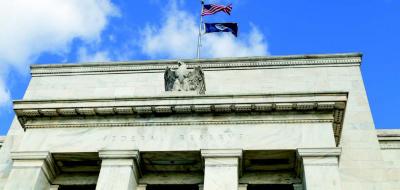US interest rates may rise more than markets expect
Written and accurate as at: Sep 20, 2016 Current Stats & Facts

US interest rates may rise more than markets expect
In the US, a range of economic indicators show that the US economy continues to recover, including an improving housing sector, a likely stable federal deficit, competitive wages - despite the appreciation of the US dollar and a relatively low reliance on exports. Several transitory factors have been keeping inflation below the Fed’s two per cent target. However, as the oil price bottoms out, the US dollar stabilises and the labour market continues to tighten, wage growth and inflation pressures are likely to normalise. Consistent with previous cycles, this will require the Fed to tighten monetary policy, probably more so than the market is expecting.
The Eurozone is likely to continue benefiting from a weaker currency, a stronger US economy, lower commodity prices, and an improvement in borrowing conditions and credit flows in an environment of ultra-low interest rates. However, the combined effects of high debt levels, labour market rigidities and unfavourable demographics are likely to present ongoing headwinds for growth. The Eurozone also remains vulnerable to major shocks, such as an escalation of geopolitical tensions with Russia, the election of Eurosceptic governments or a collapse in the Chinese yuan. Each of these scenarios could trigger a dramatic uplift in periphery Eurozone sovereign bond yields, and would heavily test the resolve and mandate of the ECB.
While we remain concerned about the short to medium-term outlook for China, we do not believe that China is about to have a financial crisis or experience a hard economic landing. China’s rapid economic growth in recent years, fuelled by the large credit stimulus during the GFC, has been unsustainable. Although credit growth has slowed, it continues to grow at 15 per cent per annum.
Prospects for equity markets
Our base-case outlook for the next three years assumes a continued recovery in the US with modestly rising inflation, a continued slowdown in China (but not a financial crisis or hard landing) and an improvement in the economic outlook for Europe. We remain cautious about the outlook for equity markets given the recent Brexit vote, the environment of abnormally low interest rates, historically elevated price-earnings multiples, risks associated with the recapitalisation of the Italian banking system and the continued withdrawal of US monetary policy stimulus. While the Fed and other central banks believe their policies are highly stimulatory, such policies also act as a tax on the world’s savers by reducing or eliminating interest income. We continue to believe markets are mispricing the likely future path of the federal funds rate and long-term interest rates in the US. It is prudent to remain cautious in this environment.
We continue to see attractive opportunities for Australians to invest in high-quality global businesses, although pricing is less attractive than in recent years. Risks to the Australian dollar appear weighted to the downside and the Australian economy remains exposed to the continued unwinding of the commodities boom, domestic housing investment boom and household credit boom, which further weakness in China could exacerbate. Domestic economic weakness and global disinflationary forces are putting downward pressure on Australian interest rates at a time when the US economy is moving towards full employment and higher interest rates. The challenges facing the Australian economy serve as a reminder to investors of the importance of achieving meaningful portfolio diversification to preserve capital and higher risk-adjusted returns over the investment cycle.
Source: Magellan










